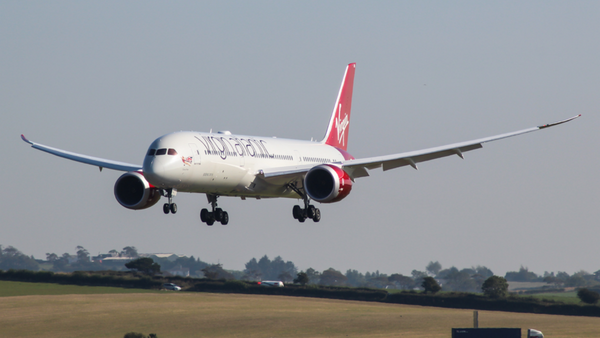The Virgin Atlantic flight from Los Angeles to London's Heathrow Airport exceeded 800 mph as it traveled over Pennsylvania on Monday night. The typical cruising speed of the Dreamliner is 567 mph, according to Aerotime News Hub.
Although the boost didn't last for the entire flight, it did allow the commercial airliner to arrive at its destination a whopping 48 minutes early.
And while the plane did get past the speed of sound, which is recorded at 760 mph, the flight didn't actually break the sound barrier, since the plane's speed was the result of the jet stream, not the plane's engines.
According to the Drive, the discrepancy can be explained by the difference in groundspeed, which measures how fast a plane appears to be flying from the vantage point of someone on the ground, and airspeed, which is how fast an aircraft is traveling compared to the air around it.
"From the perspective of the [Federal Aviation Administration's] ground-based tracking systems, the Virgin Boeing would seem to be going supersonic over the Northeast, while the passengers and crew would have felt as though their plane was cruising along at a nice, happy Mach 0.85 or so," the publication explained.
Either way, the measured speeds left experts shocked as they witnessed the series of events unfolding.
— Paul Deanno (@PaulKPIX) February 19, 2019
— Peter James (@jetpeter1) February 19, 2019
And it wasn't just the London-bound flight that got a little boost.
— Daniel Farrell (@PapaBear00) February 19, 2019
— Chris Jackson (@ChrisJacksonSC) February 19, 2019
According to Kris Van Cleave, a CBS News transportation correspondent, the previous speed record for a 787 airliner was set at 776 mph in January 2017 during a flight from New York's John F. Kennedy International Airport to London's Gatwick Airport.
"That flight set a record for the fastest subsonic transatlantic commercial airline flight — 5 hours and 13 minutes, thanks to a 202 mph tailwind," he said.
Last week, the US's National Oceanic and Atmospheric Administration (NOAA) declared an El Nino effect in the tropical Pacific Ocean. Experts have indicated that this weather event is propelling the jet stream to higher speeds than usual.
— Rob Perillo (@robperillo) February 18, 2019
According to NOAA, the arrival of El Nino or La Nina causes massive changes in rainfall and wind patterns, with the most significant impact being "the shift in the path of the mid-latitude jet streams."
— Jeff Berardelli (@WeatherProf) February 19, 2019
In addition to the El Nino effect, twin cyclones that formed in the central Pacific, the polar jet stream in Alaska that's split into two branches and the location of a polar vortex in the US Northeast also made the jet stream even stronger, according to CBS News.




